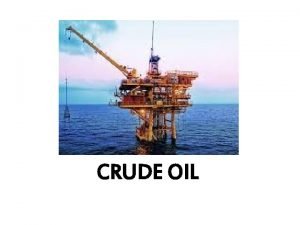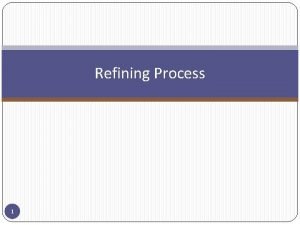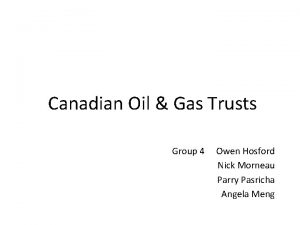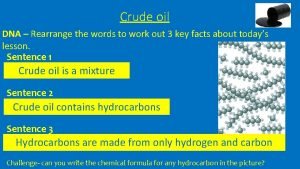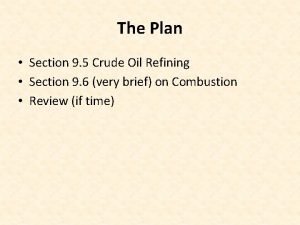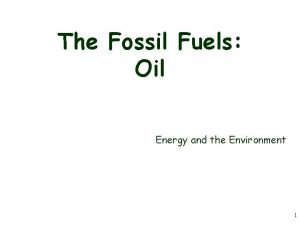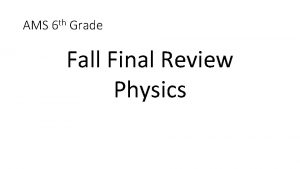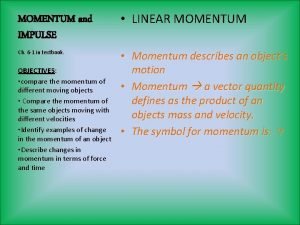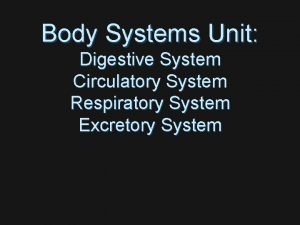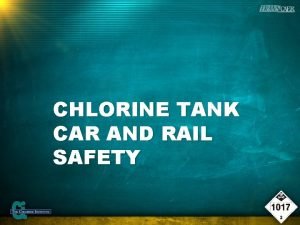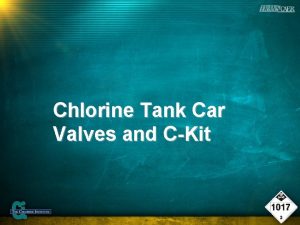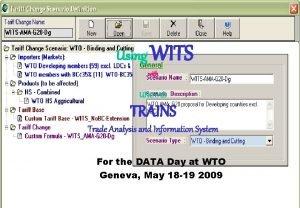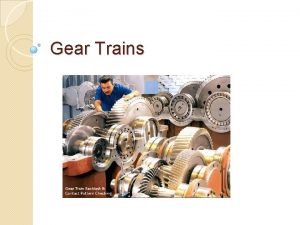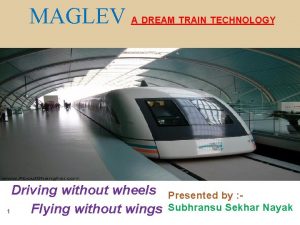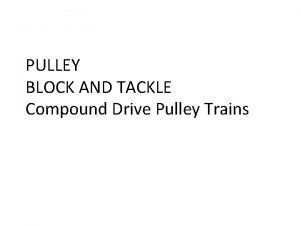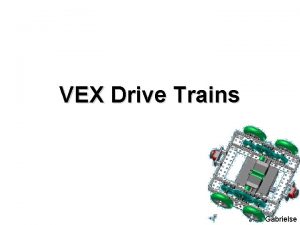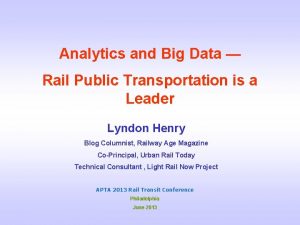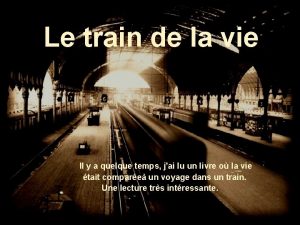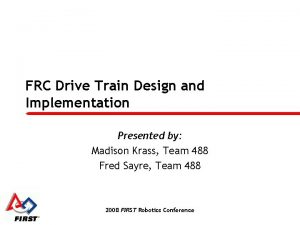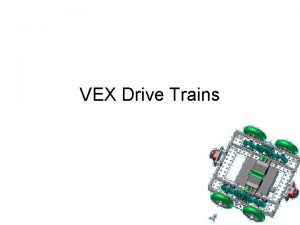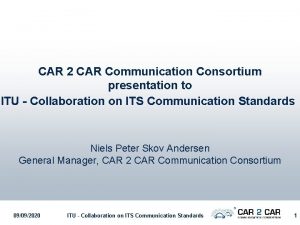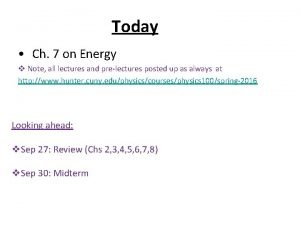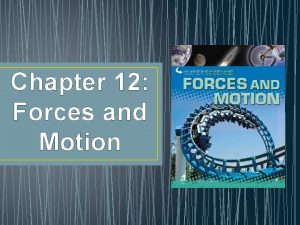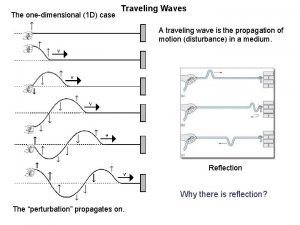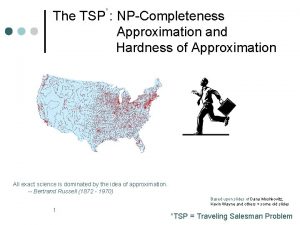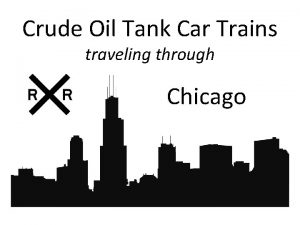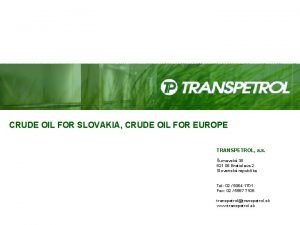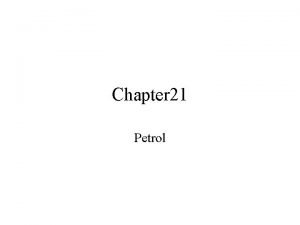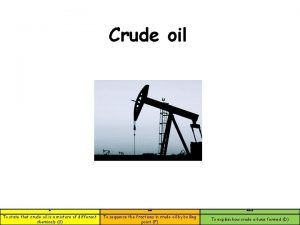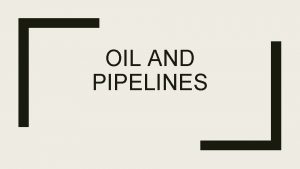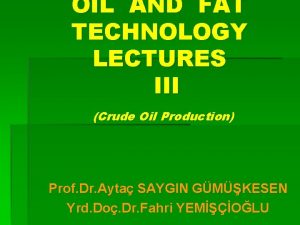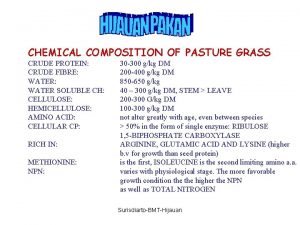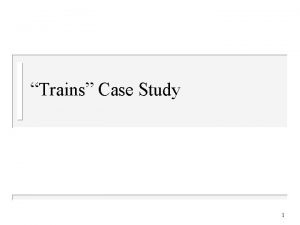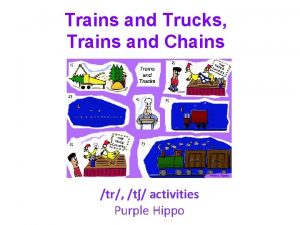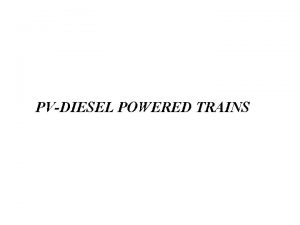Crude Oil Tank Car Trains traveling through Chicago









































- Slides: 41

Crude Oil Tank Car Trains traveling through Chicago

Presented by the Chicago Greens www. illinoisgreens. org

and the New York and Chicago Railroad electric America now has a 97% oil-reliant transportation system

Freight is moved by rail, water, pipeline, truck, and air The rail network accounts for 40 percent of U. S. freight moves by ton-miles (the length freight travels)

Each person in the U. S. requires the movement of approximately 40 tons of freight every year.

Rail shipments of crude oil have grown from a few thousand carloads a decade ago to 434, 000 carloads last year, with projections to 600, 000 a year by 2015

Don’t buy the argument that crude-by-rail disasters demonstrate the need for the Keystone XL pipeline. In fact, the two transport methods have very little to do with each other. The vast majority of crude moving by rail is moving east or west from shale sources, not the tar sands crude that Keystone XL would have shipped. Oil producers have rejected proposed pipelines because they prefer the flexibility of rail to sell their products to whichever market is paying the highest price.

The type of crude being transported may be more flammable than traditional heavy crude oil. In recent accidents, tank cars exploded with a force that surprised investigators. Refineries presently do not have the processing towers, known as stabilizers, that shave off flammable natural gas liquids (NGLs) from crude.

Blast Zone of Crude Oil Tank Car Trains Each day, nearly 500 freight trains pass through the region ¼ of the nation's freight rail traffic, handling 37, 500 railcars Each of the cars can spend from 10 to 30 hours traversing the Chicago region, and switched at any one of the 21 yards

6 of the 7 largest rail carriers access the region: the eastern railroads, Norfolk Southern (NS) and CSX; the western railroads, BNSF Railway (BNSF) and Union Pacific (UP); and the two Canadian railroads, Canadian Pacific (CPR) and Canadian National (CN).

5 Corridors in/out - through Chicago Central, Beltway, Western Ave, East-West, Passenger Express The volume of goods transported via rail to, from, or through Chicago is forecast to increase nearly 150 percent between 2010 and 2040.

The state is served by 47 common freight carrier railroads, and 10 private freight carriers. There are 25 major “junctions” where trains headed in different direction, on different railroad, will regularly meet. In addition, 760 passenger trains pass through the region every day.



The rail lines built more than a century ago in Chicago were not configured for the volumes / types of freight being carried currently



Does a crude oil tank car train pass by my house, or go through my neighborhood?

The U. S. is becoming a more urbanized country. It is forecast that 75% of U. S. inhabitants will live in these areas.

40 crude oil trains roll through the Chicago area weekly 30 trains a week travel through Kane, Du. Page and Cook counties on the BNSF - through suburbs from Aurora and Naperville to Cicero and into Chicago Canadian National runs 5 to 7 crude oil trains a week through Will, Cook and Du. Page counties An average of 4 Canadian Pacific crude oil trains pass through Lake, Cook and Du. Page counties weekly The Union Pacific reported up to 2 trains a week through Cook and Will counties Trains are turned over in Cook County to CSX Transportation and Norfolk Southern railroads and continue to east coast refineries

There is no legal limit to the length of train. "Helper" engines can be added at the rear of a train, and enable increasing the length. Super freight trains, although not common, can extend about 3 1/2 miles.



The Staggers Act of 1980 deregulated the American railroad industry

Tanks cars have a plate thickness of only 7⁄ 16 inch, with a capacity of carrying 34, 500 US gallons of oil. Much of the oil is being hauled by an old fleet of some 78, 000 tank cars lacking safety features.



More than 1 million barrels of crude oil move by train across the U. S. every day

Maintenance of Way Federal track safety standards allow 19 out of 24 crossties to be defective along any 39 -foot stretch of the lowest grade of track, where the speed limit is 10 m. p. h. On the best of tracks, which have a speed limit of 80 m. p. h. , the standards allow half of the crossties to be decayed or missing.



Speeds in excess of 25 mph “irresponsible” given known weaknesses of tank cars Slower speeds can cause a sloshing effect in tank cars, with rolling stock wobbling off the tracks

10 Accidents a Year Anticipated




Current Estimate: Average of 15 Trains Loaded Each Day For Round Trips of 3, 200 miles Traveling 17, 500, 000 Train-Miles Through the US each year

Stakeholders: American Petroleum Institute American Association of Railroads

FRA Federal Railroad Administration DOT The oil and railroad industries are urging federal regulators to allow them as long as 7 years to upgrade existing tank cars. The proposals included an upgrade in operating protocols, such as lower speed limits, more track inspections, and better emergency response training. Aldermen Mayors Governor State Reps US Congress

Chi. Oilby. Rail

Chicago Greens www. illinoisgreens. org Monthly Meetings 2 nd Sunday of Each Month 2 -4: 00 PM Powell’s Bookstore Halsted and Roosevelt (800 W, 1299 S)
 Qq moves
Qq moves Naphtha uses
Naphtha uses Naphthenes in crude oil
Naphthenes in crude oil Canadian oil trusts
Canadian oil trusts What is oil made of
What is oil made of Crude oil contains
Crude oil contains Mnemonic for crude oil fractions
Mnemonic for crude oil fractions Crude oil
Crude oil A car traveling at 100 km/h strikes an unfortunate bug
A car traveling at 100 km/h strikes an unfortunate bug An 85 kg fisherman jumps from a dock
An 85 kg fisherman jumps from a dock Impulse and momentum relationship
Impulse and momentum relationship A 2240 kg car traveling to the west
A 2240 kg car traveling to the west Press station palm oil mill
Press station palm oil mill Pathway of food from mouth to anus
Pathway of food from mouth to anus Chlorine tank car
Chlorine tank car Tank car valves
Tank car valves Instability of emulsion
Instability of emulsion Flow through an orifice lab report discussion
Flow through an orifice lab report discussion Unctad trains
Unctad trains Degree of comparison of merry
Degree of comparison of merry Velocity ratio of gear
Velocity ratio of gear Scaffold ppt
Scaffold ppt Maglev pros and cons
Maglev pros and cons Pulley trains
Pulley trains Holonomic drive train
Holonomic drive train Rail big data analytics
Rail big data analytics Citation train de la vie
Citation train de la vie Drivetrain frc
Drivetrain frc Vex drive trains
Vex drive trains Rbp trains chris
Rbp trains chris Grand corps malade les voyages en train
Grand corps malade les voyages en train Car to car communication consortium
Car to car communication consortium Ch7on
Ch7on Gerunde
Gerunde What are verbals
What are verbals Traveling might satisfy your desire for new experiences.
Traveling might satisfy your desire for new experiences. Even swap method
Even swap method Summarize brian's problem at the end of this chapter
Summarize brian's problem at the end of this chapter Which universal force can repel as well as attract?
Which universal force can repel as well as attract? This diagram indicates that
This diagram indicates that Traveling wave
Traveling wave Tsp np hard
Tsp np hard

